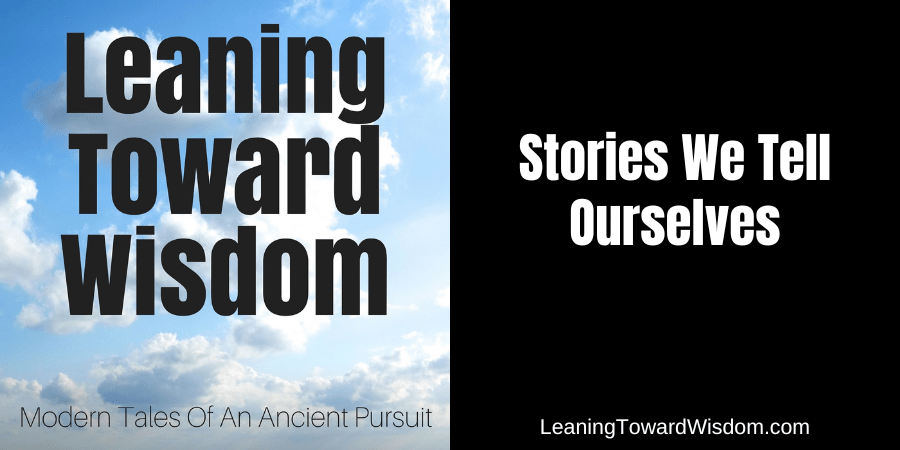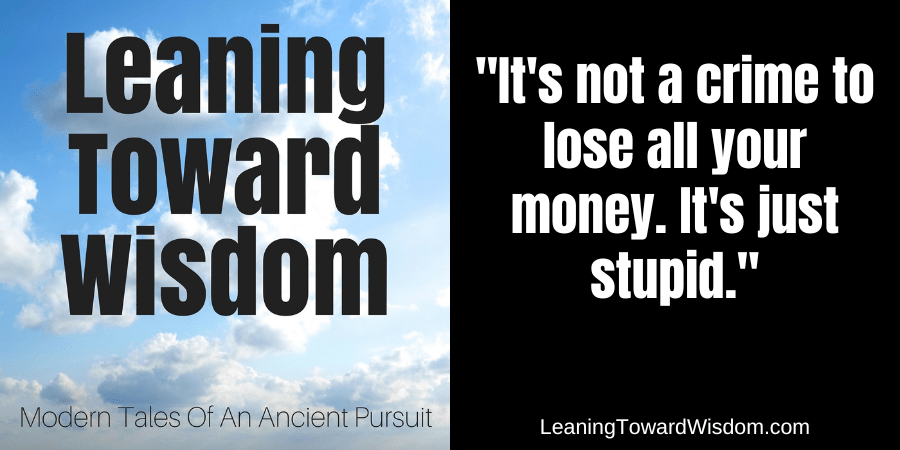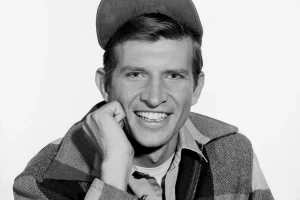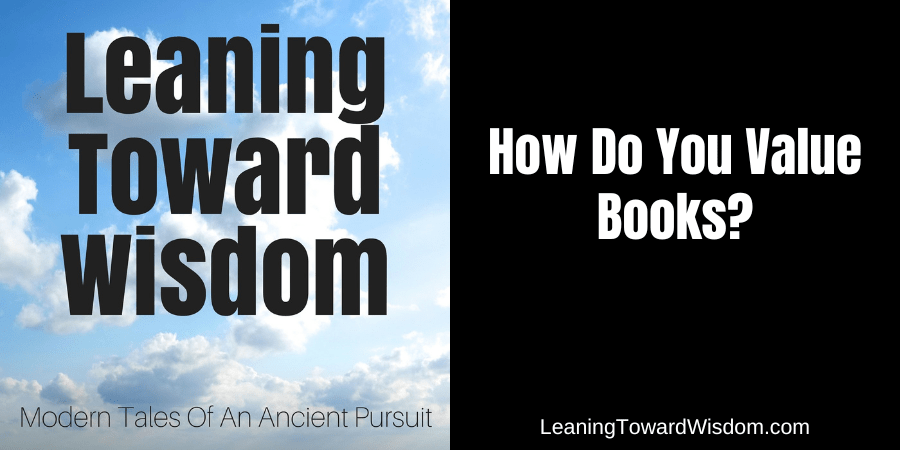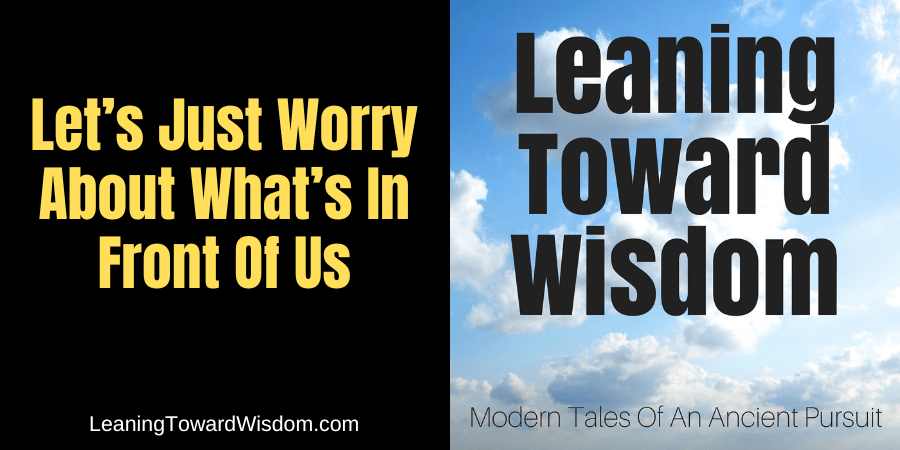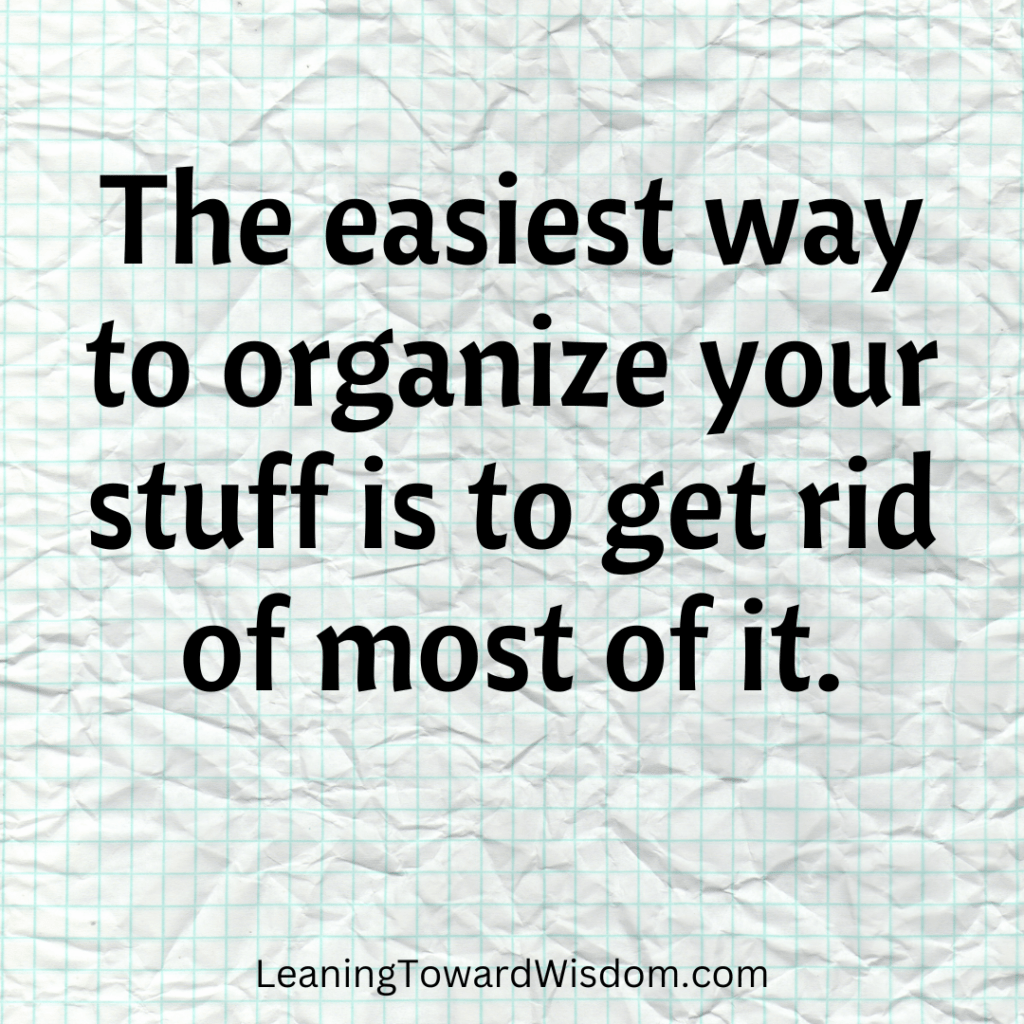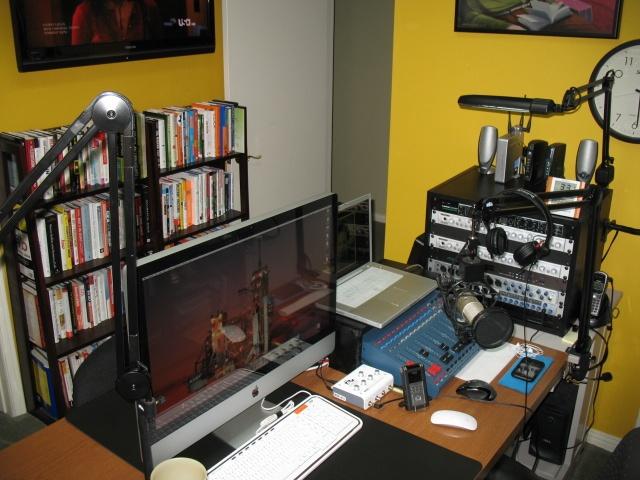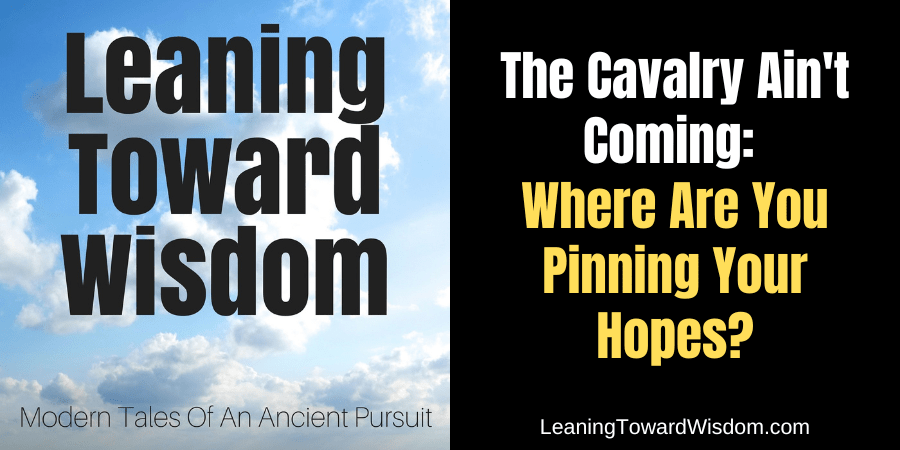Stories We Tell Ourselves
Podcast: Play in new window | Download (Duration: 50:44 — 46.5MB)
Subscribe: Apple Podcasts | Spotify | iHeartRadio | Email | RSS | More
Romans 12:2 “And be not fashioned according to this world: but be ye transformed by the renewing of your mind, that ye may prove what is the good and acceptable and perfect will of God.”
Mind transformation isn’t just a religious thing, it’s a human thing because God created us in His image.
Genesis 1:27 “And God created man in his own image, in the image of God created he him; male and female created he them.”
The fascinating thing about this is not that we’re god-like because we’re not. But we are. We’re created in the image of God and I don’t fully understand everything that means, but I can grasp major chunks of what it means. For starters, the entire Creation event shows us the power of God to think in advance. To first see it in our mind. God created the Universe and the Earth by thinking it into existence. We don’t have God’s power so we’re unable to do that physically, but because we’re in His image we can pre-think something before it becomes reality.
In January 2017 The New Yorker published a story entitled, “The Voices In Our Head: Why do people talk to themselves and when does it become a problem?”
The author of the piece mentions literally talking to ourselves. Something some of us do. Others don’t. And neither one makes us any saner than the rest. It’s an interesting article even if it is a bit off-track from how we’re going to discuss the inner voices that each of us do encounter every day.
John Sebastian wrote a song back in 1974, Stories We Could Tell. The opening lines include:
Talkin’ to myself again
and wondrin’ if this travelling is good
Is there somethin’ else a-doin’
We’d be doin’ if we could
Whether your talk to yourself verbally – out loud – or whether you’re talking to yourself silently in your own head…you ARE talking to yourself. Some of us are more verbose in our talking to ourselves than others. Just like we are out loud maybe. 😉
So the issue isn’t whether or not we’re talking to ourselves…but rather the question is, “What are we saying?” And why?
By introducing mind transformation hopefully, you’ll consider – if you’re not already convinced – that barring some challenge (mental illness, PTSD, or some other issue that requires professional assistance) you’re in control of yourself, and equally important, your thoughts belong to you. That means mind transformation is possible. But what is it?
Simply put, it means you can control what you think about. You can control how you think about something. You can control what you focus on and what you ignore. You’re responsible for your own life, first by being responsible for your own thoughts.
Rhonda and I are in the car talking about the choices people make – the foolish choices. Somebody’s infidelity in their marriage was the prompting topic. We discussed how such poor choices happen. I remarked, “They (the unfaithful spouse) think about it, decide they want it, and then act on it. I guess, to them, at least in the moment, it seems like a good idea. Kinda like a person who steals or robs finds themself needing money and immediately they start thinking of who or how they rob somebody. Most of us don’t immediately go to those thoughts. Instead, we likely think of what we might be able to sell, or how we might be able to find a job – or a better paying job.”
“If it is to be, it’s up to me.”
I’ve heard that phrase as long as I can remember. It’s intended, in part, to be empowering. To help encourage us to be proactive. But more deeply it signifies that we have the ability and opportunity to pre-think our lives. We can see our future before it happens. Mentally, we can make it whatever we want. That doesn’t mean it will happen as we think. It doesn’t mean we can think it into existence. Only God can do that, but we are able – as creatures in His image – able to think ahead of time and behave with intentions based on how we’re thinking.
Animals behave with instincts. They act and react based on those instincts. To eat. To rest. To reproduce.
Humans have a capacity to insert ourselves – mentally – into situations we’ve never before encountered. We can run scenarios in our heads and think about possible outcomes. We can THINK. And our thinking determines our actions and behavior.
People love to quote the first part of Proverbs 23:7 “For as he thinketh in his heart, so is he:” – but the verse goes on to say “Eat and drink, saith he to thee; but his heart is not with thee.”
The real meaning of the verse is that the way the man thinks is really who he is. He says, “Come on eat and drink” but he really doesn’t want you to. He’s a hypocrite.
So it’s absolutely true that if we want to be better humans then we must have better thoughts. Life is largely an exercise of our minds. The stories we tell ourselves are very important. They include the stories we tell ourselves about ourselves. And the stories we tell ourselves about others.
Others
I’m going to start with others because through the years of reading and studying human behavior I’ve come to understand that what we tell ourselves does have an external component. Namely, we largely learn how to tell ourselves our own story. And part of that learning comes from others and the things that happen to us. External stuff.
I was in 5th grade. I was also a good student, which meant I made good grades. 😉
He was in my class, but he was constantly in trouble. A class clown who worked overly hard to be funny. Sometimes he succeeded. Many times, he did not.
I can’t be sure, but I think I overheard two teachers talking about how he had been a bad student since the second grade. I remember wondering if he was really a bad student – based on the results he clearly was – or if he was just meeting the expectations they had for him. They had him pegged as one thing and it seemed almost too obvious to me that he was writing the story they had helped craft about him. But what did I know? I was only 11.
Some years later I’d read stories about this very thing though. Particularly in education. A kid doesn’t do very well in a class or during one year of school…and from that point forward, she struggles to escape the gravitational pull of her reputation among faculty. I’d watch and listen to the interactions between teachers and these kids and I’d cringe, thinking how I’d just want to climb under a rock if I was the aim of the teacher’s anger or frustration. Don’t get me wrong. I knew these kids were disruptive and often rebellious. Some were troublemakers extraordinaire. Others were just cleverly mischievous. I never got in trouble in class. Getting in trouble wouldn’t have crossed my mind.
It may have been my first sober thoughts about the stories others tell about us and how we’re able to do the same. We think things about people. Maybe, like my classmates, they’re based on poor behavior. Maybe they’re not based on much of anything. Maybe they’re based on the past, not the present. I’ve lived long enough to know how sometimes I can get it wrong. Things aren’t always what they seem. And people aren’t always what we think.
The 2-way street is in full effect. The stories we tell ourselves about others. The stories we know others are telling themselves about us.
“Don’t listen to what others say. Forget what other people think.”
We all do. To what degree is largely individual. I chuckle at the person who constantly declares how they don’t care what anybody thinks or says. Translation: I’m completely obsessed and fixated on what everybody is saying about me! 😀
I’ve already shown you that I do care what others think because I wanted to please teachers. I don’t want to create enemies. Not intentionally anyway. And I don’t want anybody to think ill of me. Influence and impact are always at the forefront of my mind. I care about the stories people tell themselves – and others – about me.
To the point that I’m paralyzed to do anything? No.
The point that it determines what I’m going to do…or what I’m going to feel or think? No. Never.
But to the point where I consider it…absolutely. Which means I think about it. Sometimes a lot. Other times, not much at all. It depends.
I’m extraordinarily self-reflective. One of my many curses is that I own it, even when it’s not mine to own. It’s the proverbial empathy meter that I’d peg if such a meter existed. Putting myself in the other person’s shoes is easy and natural. I don’t work at it. It just happens. So rather than feeling victimized if somebody treats me poorly, I’m too busy trying to figure out what’s going on with them to cause it. Playing the part of a victim just has never entered my mind as a choice I should consider. Instead, I internalize and can sometimes consume myself with negativity trying to accept responsibility for everything. Sometimes it morphs into blaming myself, too.
I bring that up not to overly share, but to wonder out loud about people who choose to think others are victimizing them. I choose to think of how others can help me correct some misconceptions. How I can engage in questions of somebody and discover more accurately what’s going on with them – rather than just assuming I know. Curiosity has always been my friend.
For the past 6 years or so I’ve worked more diligently at surrounding myself with people who can help me. It’s always been my habit, but I’ve tried to become more intentional about it whereas in the past I was pretty much fully intuitive about it. People make a big difference for us, but the biggest positive differences are made by only the safest, best people for us.
Habitual behavior is repeated. Ditto for our thinking. This is why we have to harness greater control over how we think about others and how we allow the way others think about us to impact us. If those folks who hate us can impact us, then it stands to reason if we surround ourselves with more people who believe in us…we can be positively impacted.
So where are you going to spend your time?
Fretting about the folks who don’t like you? Maybe even hate you?
Or being more purposeful in engaging with the people who encourage you and help you?
We need to pick one and let the other one go because we learn from each other. We tend to reflect one another, too – so we should consider that when we form our circle of friends. 1 Corinthians 15:33 “Be not deceived: Evil companionships corrupt good morals.” We’re deceived when we think others won’t influence us or impact us. “They won’t rub off on me,” are the famous last words of many foolish people.
The stories others may create and tell about us aren’t rumors, gossip, or bad-mouthing that frequent many conversations. It’s how others view us, what story they’re telling themselves about who we are, or who they think we are.
These stories are both important and meaningless. Important because we care about our influence – so we want to have a positive impact as much as possible. If you want to have influence you can’t just live for yourself declaring that you don’t care what anybody thinks. Meaningless in the sense that we can’t let others dictate our story because we’re each our own head writer. That’s not to say nobody else is involved because I’ve got a co-author named Rhonda. But she’s not the head writer of my story, I am. Besides, she’s busy being the head writer of her own story, while I’m co-authoring that story. We care about each other, but not enough to acquiesce our lives to each other – because it’s not even possible. We’re responsible for our own lives and we bear responsibility for how we influence each other, too!
Ourselves
The stories we tell ourselves about ourselves create the story we write – the story the rest of the world sees. Self-talk. Head trash. There are plenty of phrases we use that illustrate how powerful we know the words in our heads are because they provide us with belief.
Robert Duvall plays Hub in the movie Second Hand Lions. It’s the story of 14-year-old Walter, who is sent to spend the summer with his great uncles, a couple of old bachelors – Garth (played by Michael Cane) and Hub (played by Robert Duvall). There’s a poignant line by Hub.
Sometimes the things that may or may not be true are the things a man needs to believe in the most. That people are basically good; that honor, courage, and virtue mean everything; that power and money, money and power mean nothing; that good always triumphs over evil; and I want you to remember this, that love… true love never dies. You remember that, boy. You remember that. Doesn’t matter if it’s true or not. You see, a man should believe in those things, because those are the things worth believing in.
A man should believe those things because those are the things worth believing in.
There’s the rub, figuring out the things worth believing in – because that will determine our story.
That explains why I try to lean into optimism. It’s a choice. Some part of it is my default, natural wiring. I think things will be better. I instinctively try to figure out how to help make things better.
Maybe with every force or inclination, there’s a counterforce or inclination because I also naturally tend to think of all the things that can go wrong. Trapped between these two pulls – optimism and hope versus “well, this won’t work at all.” It gives me a choice. You’ve got your own choices. We all do.
Life is about choices.
Our choices determine our destiny – our story. Specifically, the choices we make in what to believe because our beliefs drive our behavior. What we think matters.
When Walter first arrives at the grand uncle’s rundown farm in Texas he asks if he can go inside the house to watch TV. “Ain’t got no TV,” they tell him. Turns out they ain’t got much that would interest a teenage boy. Hub tells Walter, “If you need somethin’, you’d best find it yourself, or even better, learn to do without.” 😉 We’re busy trying to find it, but Leaning Toward Wisdom is a collective effort toward individual outcomes. Your life, your choices, your story. My life, my choices, my story.
I learned I should believe in optimism when it dawned on me that my time spent thinking belonged to me. Whenever those “what could go wrong” thoughts rose to the forefront of my mind, it felt awful. Depressing. Sometimes in my life, it would drive my feelings of despair. Finally, I realized if I chose different thoughts – thoughts of optimism, it was much better no matter how things turned out.
Like you, I learned about self-fulfilling prophecies in college. It seemed to me that what I was thinking couldn’t possibly determine the outcome of everything – maybe it couldn’t determine the outcome of anything beyond my control – but it could most certainly determine my choices, decisions, and behavior. And those most certainly would contribute to my outcome. Leaning toward wisdom compelled me to choose what I thought and opt for thinking of the ideal outcome, not the worst!
I’m hardly proficient at the art of optimism, but I’m practicing. After all this time, you’d think I’d have it down by now, but it shows you how hard it is to control our thoughts. Especially when it’s much easier to think or assume the worst. Convincing ourselves of how things might go south is way easier than convincing ourselves how things might work out perfectly just the way we want. In our minds, pessimism seems more likely. Did you ever ask yourself why? Why does failure seem more likely?
Because we can easily remember our failures. They scare us. Mar us. Even small ones.
And we can easily forget our successes. Especially all the small ones. We’re forgetful. Neglectful of the gratitude we should have for the successes. We ought to examine our definition of success, too. Rather than some grand plan coming to fruition, it can be as simple as being able to breathe. Another day of life. More chances to figure things out and get better. More opportunities to be a good influence on others. Enough food to eat. Enough water to drink. Enough clothing to wear. Enough shelter to protect ourselves from the weather. Simple things. Staples of life. All the things we take for granted while we languish over something that seems to matter more, but doesn’t.
Another choice. To be thankful and express our gratitude. Or to focus on our lack, our want, and lament that life isn’t what we hoped. We can choose what we’ll believe. And what we’ll believe in. It determines the story we’ll write.
Things aren’t cut and dried. Rarely are things so binary as to be one thing. We can’t merely think our way toward improvement. Besides, sometimes taking action changes our thoughts and beliefs, not the other way around.
During my years of leading retail companies, superior customer service was the priority. Folks who answered the phones were coached to smile before answering the phones. Callers couldn’t see them, but you can hear a smile in somebody’s voice. It was a fundamental principle of acting the way you want to be so you can become that way. By smiling, people behaved more friendly on the phone. They were more pleasant. It was a simple action we could easily coach and one they could easily practice.
We could have told them to change how they think about customers. Don’t think of them as intrusions, think of them as opportunities. That was certainly preached, but it was just one component of the strategy to deliver excellent customer service. Smiling was a simple behavior people could choose to do before answering the phones.
Weight loss is a multi-billion dollar business. Millions struggle with it. It’s difficult. Desirable but difficult.
Changing beliefs and thinking may not be the path forward to everybody. Some people might benefit from diving headlong into changing their behavior. What if I’m 50 pounds overweight and I don’t fret too much about my thinking or belief? What if I just start behaving the way thinner, more fit people behave? What if I start eating better and exercising more? Over time, my beliefs and thinking are likely to change if I continue the change in my behavior.
So while we’re focused today on the story we tell ourselves, part of that story is how we behave. We’ll be judged on what we do! By God. By others. So what we do matters!
It may be that there are changes in your behavior as simple as smiling that may positively influence your thoughts and beliefs.
Some may think it’s a sappy story, but I loved the movie, Secondhand Lions.
I’d been working on today’s show for weeks when I thought about Hub’s line in the movie. I searched for it on a streaming service and watched it again. It came out in 2003 and I couldn’t remember when I had last seen it, but as I watched it again it reinforced the things I’d been crafting to create this episode. Walter, the little boy, was taught by his two old granduncles what to believe and what to believe in. Even at 14, he had the power to choose for himself. So he did. He took actions that were congruent with those beliefs. We all do.
For Walter, it changed everything. Just as it had for his uncles, Hub and Garth. It changed who he was. It changed how he lived.
It changed the story he wrote.
Watching and listening to old men helped.

Please tell a friend about the podcast!
Stories We Tell Ourselves Read More »
